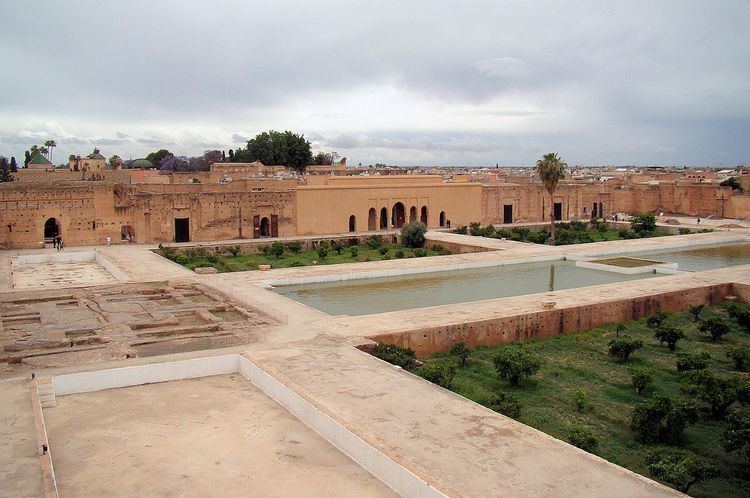Opened 1593 Function Palace | Completed 1593 Phone +212 5243-78163 Construction started 1578 | |
 | ||
Alternative names The Incomparable Palace Demolished Circa late 17th Century Address Ksibat Nhass, Marrakesh, Morocco Hours Closed now Tuesday8AM–5PMWednesday8AM–5PMThursday8AM–5PMFriday8AM–5PMSaturday8AM–5PMSunday8AM–5PMMonday8AM–5PM Similar Saadian Tombs, Bahia Palace, Ben Youssef Madrasa, Koutoubia Mosque, Majorelle Garden Profiles | ||
El Badi Palace (Arabic: قصر البديع - meaning The incomparable palace) is a ruined palace located in Marrakesh, Morocco. Commissioned by the Arab Saadian sultan Ahmad al-Mansur, sometime shortly after his accession in 1578, its construction was funded by a substantial ransom paid by the Portuguese after the Battle of the Three Kings. The palace is nowadays a well known tourist attraction.
Contents
El badi palace marrakech
Construction and design
The palace took twenty five years to build, with construction finally completed around 1593 and was a lavish display of the best craftmanship of the Saadian period. Constructed using some of the most expensive materials of the time, including gold and onyx, the colonnades are said to be constructed from marble exchanged with Italian merchants for their equivalent weight in sugar. The original building is thought to have consisted of 360 richly decorated rooms, a courtyard (135×110 m) and a central pool (90×20 m).
There are several large pavilions on the site, which are believed to have been used as summer houses. The largest on the site is known in Arabic as Koubba el Khamsiniya, which translates into 'The Fifty Pavilion', named either after its surface area of some 50 cubits or the fact that it once contained 50 columns. The site also includes several stables and dungeons.
Decline
After the fall of the Saadians and the rise of the Alaouite dynasty, the palace entered a period of rapid decline. Sultan Ismail Ibn Sharif stripped the building of its contents, building materials and decorations, to be used in the construction of his new palace in his new capital at Meknes.
Today
The palace today is a well known tourist attraction. The complex contains a museum, with exhibits such as a restored 12th-century minbar that once stood in the Koutoubia Mosque.
For a number of years the Marrakesh Folklore Festival has taken place within the palace.
